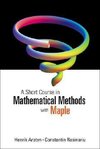
-
 Anglický jazyk
Anglický jazyk
Solid-state computer storage media
Autor: Source: Wikipedia
Source: Wikipedia. Pages: 59. Chapters: Flash memory, RAM disk, Memory Stick, Secure Digital, CompactFlash, Comparison of memory cards, Card reader, XD-Picture Card, IronKey, MultiMediaCard, List of solid-state drive manufacturers, SmartMedia, P2, Eye-Fi,... Viac o knihe
Na objednávku, dodanie 2-4 týždne
18.36 €
bežná cena: 20.40 €
O knihe
Source: Wikipedia. Pages: 59. Chapters: Flash memory, RAM disk, Memory Stick, Secure Digital, CompactFlash, Comparison of memory cards, Card reader, XD-Picture Card, IronKey, MultiMediaCard, List of solid-state drive manufacturers, SmartMedia, P2, Eye-Fi, Fusion-io, Aloaha, Cleaning card, NOR flash replacement, Resistive random-access memory, HyperOs HyperDrive, Cleaning cards, I-RAM, Mimobot, SFTL, IO Accelerator, Multi-level cell, JetFlash, Cruzer Enterprise, SlotMusic, Memory card connector, Linear Flash, DataLock Technology, BeeCard, Memory card reader, MiCard, USB FlashCard, Disk on module, George Samachisa, MMCmicro, Central Management and Control, Miniature Card, OCZ Vertex 120GB, HuCard, Intelligent Stick, Silicon Disk System, SxS, PLEDM, Gruvi, StrataFlash, Memory Technology Device, Satandisk, Universal memory, NT Card. Excerpt: Secure Digital (SD) is a non-volatile memory card format developed by the SD Card Association for use in portable devices. The SD technology is used by more than 400 brands across dozens of product categories and more than 8,000 models, and is considered the de-facto industry standard. The SDSC (Standard-Capacity) card family, commonly known as SD, has an official maximum capacity of 2 GB, though some are available up to 4 GB. The SDHC (High-Capacity) card family have a capacity of 4 GB to 32 GB. SDXC (eXtended-Capacity) card family have a capacity starting above 32 GB with a maximum capacity of 2 TB. The availability of 4 GB capacity in both the SD and SDHC families have caused much compatibility confusion with users since each has a slightly different communication protocol. From a host device point of view, all cards within the same family appear the same to it. SD / miniSD / microSD are members of the SD family. SDHC / miniSDHC / microSDHC are members of the SDHC family. SDXC / microSDXC are members of the SDXC family. SDIO / miniSDIO are members of the special SDIO I/O family. SD adapters allow the physical conversion of smaller SD cards to work in a larger physical slot, and basically are passive devices that connect the pins from the smaller SD card to the pins of the larger SD adapter. Since cards from all families have a similar physical size, it tends to cause confusion with consumers. For example, microSD, microSDHC, and microSDXC are all the same physical size, but the capabilities for each is defined by its respective family. The communication protocols for the SDHC / SDXC / SDIO families are slightly different from those of the established SD family, which has caused older host devices to not recognize the newer card families. When a SDHC or SDXC card is inserted into an older SD host device, it shouldn't cause any physical or electrical damage to either the card or host device, though the host device won't be able to recognize the card. Some older hos
- Vydavateľstvo: Books LLC, Reference Series
- Rok vydania: 2012
- Formát: Paperback
- Rozmer: 246 x 189 mm
- Jazyk: Anglický jazyk
- ISBN: 9781155870779








 Nemecký jazyk
Nemecký jazyk 


